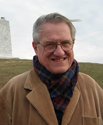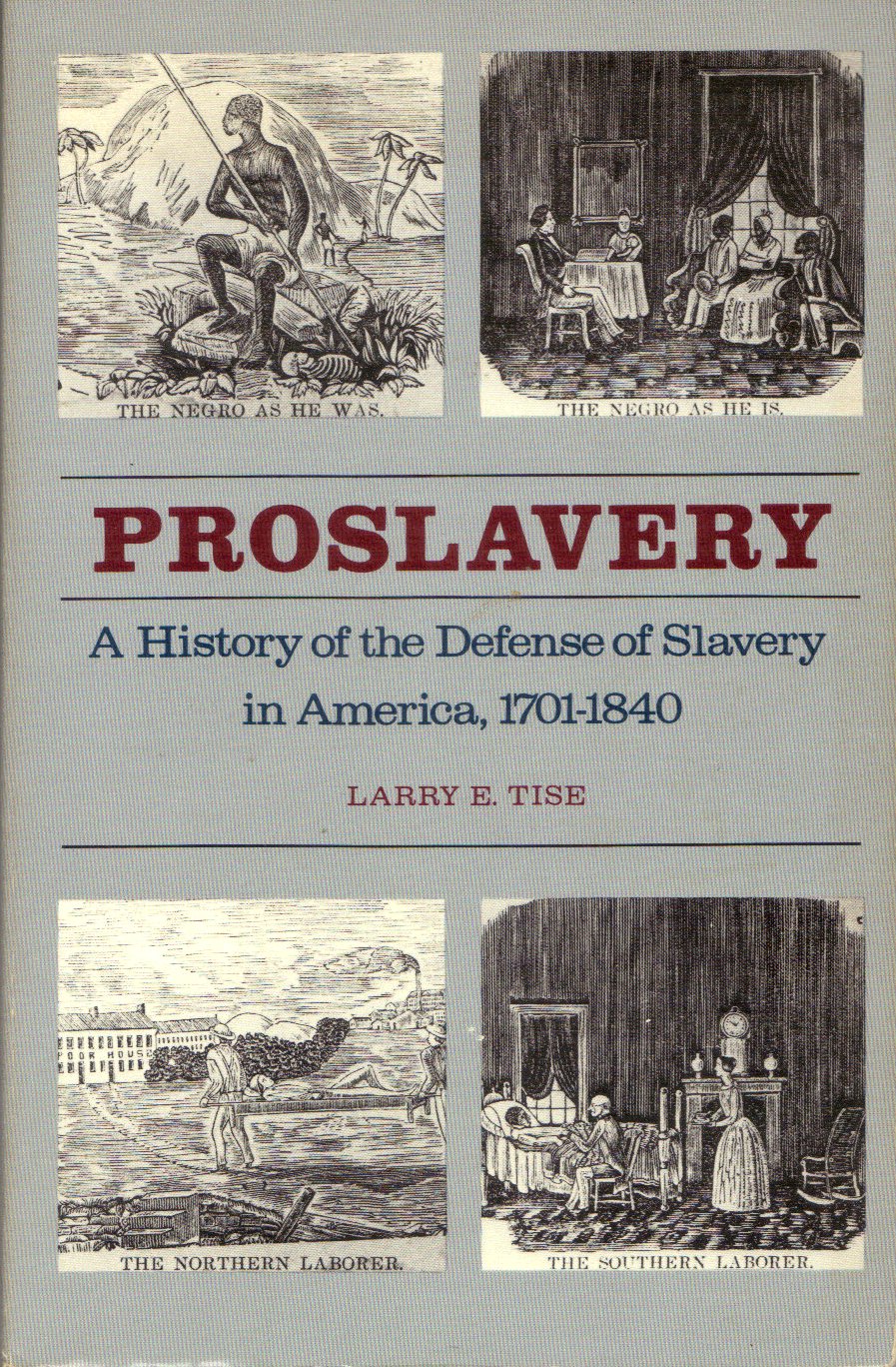Winner of the American Historical Association's Herbert Feis Award
Probing at the very core of the American political consciousness from the colonial period through the early republic, this thorough and unprecedented study by Larry E. Tise suggests that American proslavery thought, far from being an invention of the slave-holding South, had its origins in the crucible of conservative New England. And, as Tise shows, when the South did finally embrace proslavery, the region was placed not at the periphery of American thought but in its mainstream.
"Tise challenges everything that has long been held sacred by historians of the proslavery movement. Moreover, he offers us not simply a revisionist but a revolutionary thesis. He has severed pro-slavery from slavery and found its home in the very place where others had detected the origins of abolitionism. Most significantly, Tise has redefined pro-slavery thought"
—Kenneth S. Green-berg, American Historical Review.
"Learned, thoughtful, imaginative, iconoclastic and infuriating ... Proslavery should provoke valuable debates and fresh thinking and research for years to come ... Proslavery offers a breath of fresh air in its cool disposal of the increasingly trivial, or rather, trivialized social history with which we are being inundated ... Tise preaches a powerful sermon to our own times on the terrible dangers inherent in central strains of our national development"
-Eugene D. Genovese, Georgia Historical Quarterly.
"Historians generally associate proslavery thought and rhetoric with the Old South, seeing it as the response of self-interested planters to the threats of abolitionism . . . Through extensive research, Tise makes a compelling case that the proslavery arguments of the Old South were neither unique nor stated with greater conviction than in other parts of the nation. He finds the roots of proslavery thought among New England's Federalists and conservative ministers, men who feared slave rebellion and doubted the wisdom of the libertarian ideology of the American Revolution . . . A clearly written, closely argued thesis built on thorough use of primary sources."
—Choice
"Tise here studies the 'proslavery ideology, a mode of thinking . . . and a system of symbols that expressed the social, cultural and moral values of a large portion of the American population' in the first half of the 19th century . . . Tise chronicles a constant stream of books, articles, pamphlets and sermons—his chapter on the growth of proslavery arguments by clergy, usually derived from narrow interpretations of Scripture, is illuminating—and builds to a remarkable and probably controversial exploration of the 'proslavery Republicanism,' which he sees as the full flowering of the conservative Federalist viewpoint that had only temporarily been defeated by America's founding fathers when they framed our Constitution."
—Publishers Weekly
"Proslavery cuts through existing conventions and old propaganda and uncovers fresh and truthful aspects of that great middle era of American history which preceded the Civil War ... What Tise brings to light suggests the need for major revisions in American intellectual and religious history, as
they have been commonly recounted ... Perhaps the most significant thing about this book is that it is part of an as-yet-unrecognized and unlabeled shift of focus in American history writing from the South to the North"
—Clyde Wilson, Chronicles.
 |
|
|
Larry E. Tise
Larry E. Tise is an author and historian living and working both in Philadelphia and in North Carolina. Due to his unique research on the lives of the Wright brothers, he was appointed Wilbur and Orville Wright Visiting Distinguished Professor at East Carolina University during the years 2000 to 2003. In 2004 and subsequently he has continued as the Wilbur and Orville Wright Distinguished Professor of History at ECU where he also provides a professional history link to the communities of eastern North Carolina. In connection with his research on the story of the Wright brothers’ activities in North Carolina, he served from 1999 to 2003 as Consulting Historian for North Carolina’s First Flight Centennial Commission. Concurrently he spent four summers as a Faculty Fellow at the NASA Langley Research Center which he also advised on matters relating to the Wright brothers and the origins of manned flight.
|
Born in Winston-Salem, North Carolina, and with both bachelor and divinity degrees from Duke University and a Phd degree from the University of North Carolina at Chapel Hill, he has spent much of his career as a history executive, serving as Director of the North Carolina Division of Archives and History (1975-81) and as Executive Director successively of the Pennsylvania Historical and Museum Commission (1981-87), the American Association for State and Local History in Nashville, TN (1987-89), and the Benjamin Franklin National Memorial at the Franklin Institute in Philadelphia, PA (1989-96).
During his career as a history administrator he assisted in creating and served as president of both the National Conference of State Historic Preservation Officers and of the National Association of Government Archives and Records Administrators. He was one of the leaders in the creation of “public history” as a field of professional history study and endeavor in the United States and was one of the founders of the National Council on Public History which he served as its second president.
In the early 1990s he became one of the world’s foremost authorities on international awards for human achievement. During that time he was the founder and first president of the International Congress of Distinguished Awards (incorporated 1994), a capacity he still holds. Since 1999 he has published on an annual basis the “Official Roster of Distinguished Awards,” the only authoritative international index for evaluating and understanding the world’s most important prizes and awards for human achievement in the arts, humanities, sciences, technology, medicine, education, peace, and other humanitarian endeavors.
As a part of his research on the Wright brothers he has pursued a personal and professional goal of collecting, transcribing, and editing for publication all letters, documents, diaries, and photographs relating to the Wright brothers’ experiences in North Carolina. Among the products of this research was a book titled Hidden Images in the Wright Brothers’ Kitty Hawk Photographs, 1900-1911 (2005) using digital photo analysis to discover hundreds of clues about the brothers as they toiled on the Outer Banks of North Carolina. His research on Wright and related photographs has led to the discovery of many new, heretofore unknown photographs and various other objects and materials relating to the Wright brothers which he has incorporated in exhibits at North Carolina museums. His next book on the Wright brothers is titled Conquering the Sky: The Secret Flights of the Wright Brothers at Kitty Hawk has been published by Palgrave Macmillan for release in September 2009.
Other works in progress include two studies related to his research on Benjamin Franklin. One of these explores the unusual life and strange career of Franklin’s most prolific biographer, a French historian named Bernard Fa˙; the other the history of a spurious forgery known as “Benjamin Franklin’s Prophecy.” He is also working on topics relating to the life and career of Thomas Harriot—the namesake of East Carolina’s Thomas Harriot College of Arts and Sciences—and of Harriot’s more famous employer Walter Raleigh. During the spring of 2009 he organized two international conferences on these figures. A conference he organized and held at the Tower of London in January 2009 has resulted in the formation of a Raleigh Research Circle devoted to producing historical editions of the works of Walter Raleigh including the great Historie of the World (1614). A second conference—Measuring New Worlds—(1-4 April in Chapel Hill, Raleigh, Greenville, & Manteo) commemorated the quadricentennial of Thomas Harriot’s pioneering telescopic observations in the spring of 1609. This conference also resulted in plans to publish the works of Harriot for the contemporary world.
He is the author of more than fifty articles and
|
|

